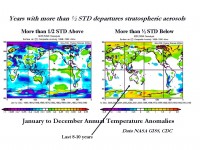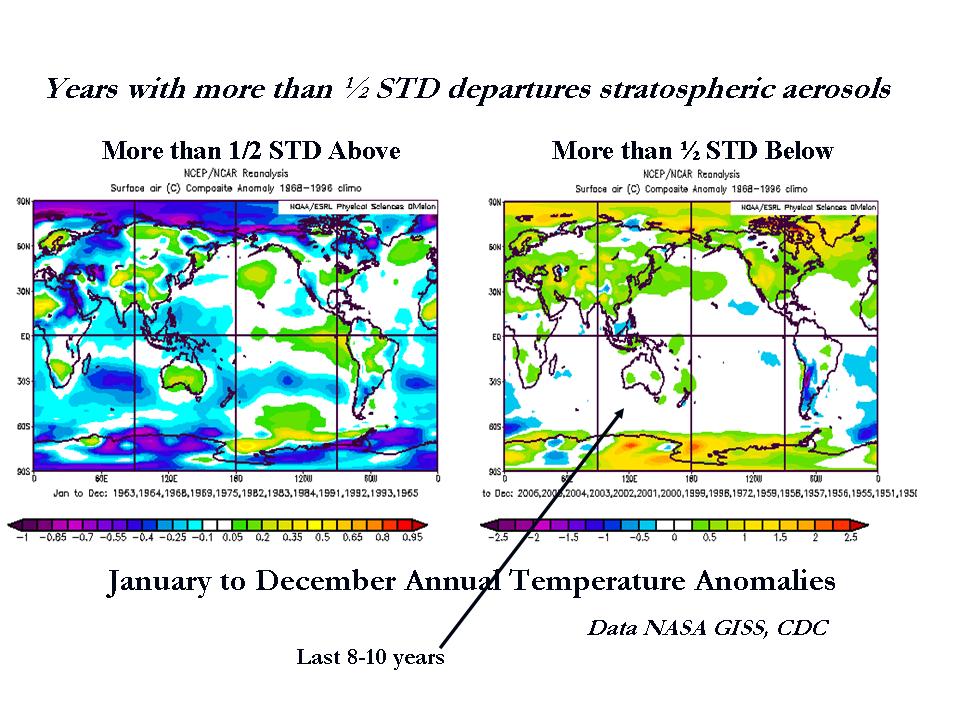By Joseph D’Aleo, CCM
Climatologists may disagree on how much the recent global warming is natural or manmade but there is general agreement that volcanism constitutes a wildcard in climate, producing significant global scale cooling for at least a few years following a major eruption. However, there are some interesting seasonal and regional variations of the effects. Robock (2003) and others have shown that major volcanic eruptions seem to have their greatest widespread cooling effect in the summer months. In the winters, the latitude location of the volcano determines whether the winters are colder or warmer over large parts of North America and Eurasia.

In this All About Climate paper, we will discuss these research findings but also show how unusually low volcanic aerosol activity after a long period without a major volcano as we are experiencing currently, produces a global warming with greatest warming in polar regions and northern hemisphere continents.

Annual Temperatures when Stratospheric Aerosols are high (left) and low (right). See larger image here.

Annual Temperatures when Stratospheric Aerosol content is high as after a major volcano(s) (left) and low (right). Composites are for years where standardized globally averaged aerosol levels exceed 1/2 STD above or below long term average




